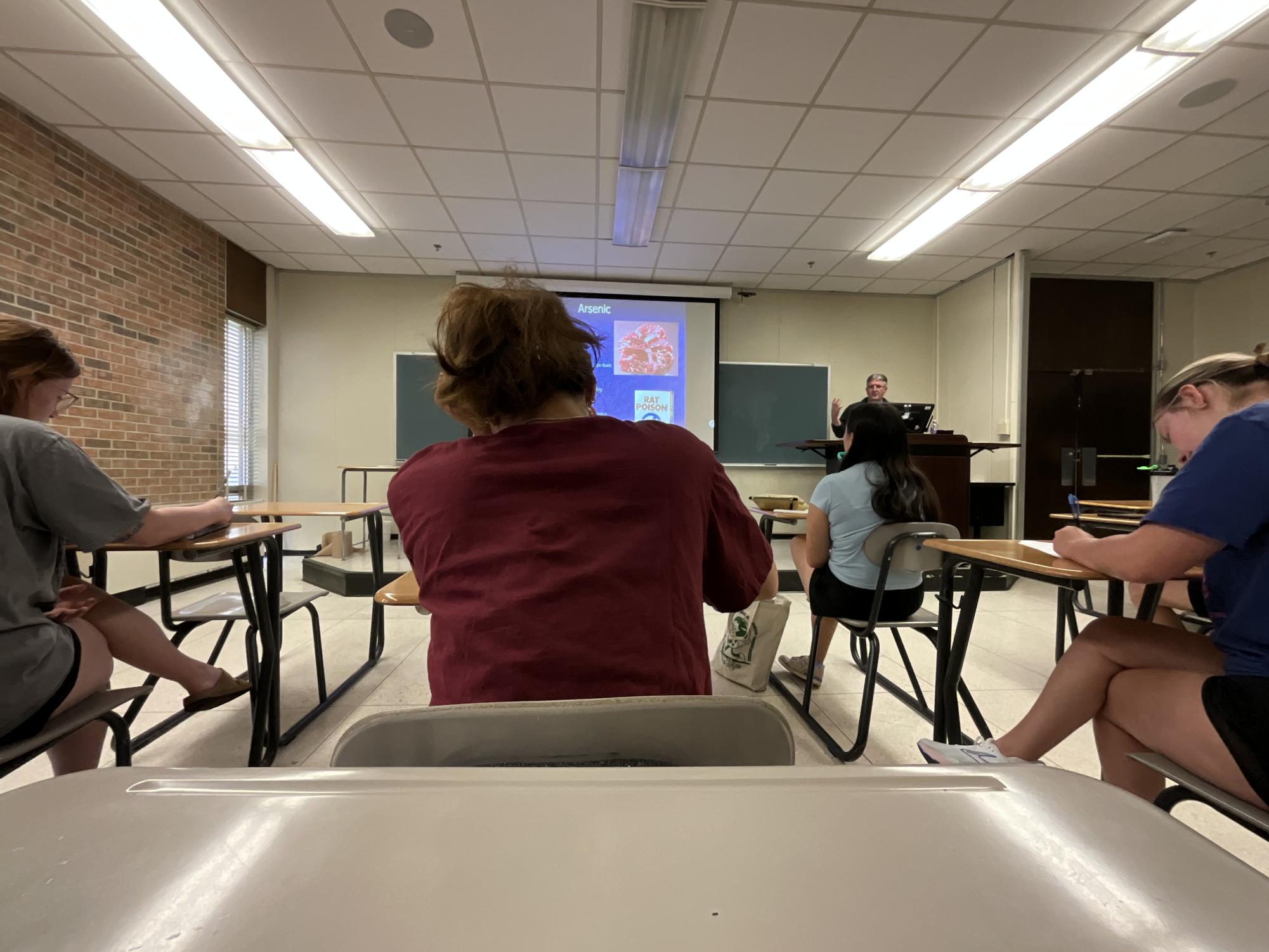
As each year goes by, scientists discover new technological advances and engineers make old machines brand new again.
To keep up with growing technologies, educators update their teaching methods and
tools to accommodate their students. When COVID-19 shut down the United States in 2020, almost every school in the U.S. implemented the use of technology for virtual instruction to keep students and teachers connected and learning. In turn, more technological advancements were made in education, which affected teaching methods.
Traditional methods of teaching continue to exist in the classroom, including professors giving lectures to students, assigning chapters to read, standard class discussions and much more.
Alongside traditional methods, a technological component also exists. Canvas, for example, allows professors to post PowerPoints and links to recommended articles or videos. Professors can also create interactive forms of work for their students, such as discussion boards, which allow students to respond to one another from any setting. Similar to traditional methods, technology offers students access to online textbooks rather than standard ones.
Both methods allow professors the ability to provide their students with access to tests and assignments. However, there are both positive and negative impacts of the changes in teaching methods as a result of technology.
As professors allowed students unfiltered access to the internet during class, students cheating on their assignments became more frequent. Because students are not engaging in the learning environment as a result of said access, there is potential for their memorization and retention skills to start declining.
Instead of listening to the professor read from a PowerPoint, many students are more tempted to open a game on their computers. While posting PowerPoints on Canvas allows students who miss instruction to easily catch up, it also causes students to pay less attention in class.
Sophomore pre-social work major Delanie Carty expressed how even though PowerPoint lectures are good for her because she is a visual learner, teachers who predominantly use them create a disengaging learning environment.
“I feel like now, more than ever, students in our generation want to be challenged,” Carty said. “They are used to scrolling for hours. Teachers need to give them something different.”
Psychology instructor Joseph McGahan, PhD in social psychology, points out his concerns regarding this style of technology in teaching.
“PowerPoints are so ridiculously simple, and students become used to that,” Joseph McGahan states. “Students stop reading after 2-3 sentences.”
Although new technological advancements require professors to learn how to navigate them, they have not only played a huge part in the lives of students, but also in their education. For freshmen in high school during the peak of COVID-19, technology played a large role in their learning experience, as it was the first widespread use of virtual learning when schools shut down nationwide.
As technology becomes more developed, undeniable changes to the classroom will be made. This change has affected both the way educators teach and how students learn. Teachers can either expand or limit the use of technology in their classroom; however, as students, we should encourage professors to continue updating their teaching methods with each new technological advancement. Our continuous support will allow for education to change and adapt to what is necessary and most nurturing for students, furthering their education.

